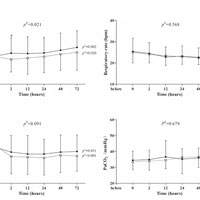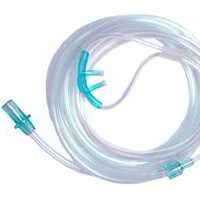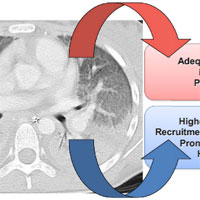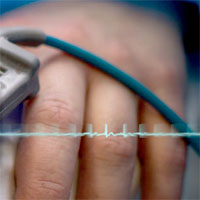Tag: hypoxemia

Hyperoxia in the Critically Ill
Critically ill patients come to the ED all the time and it is almost reflexive to liberally administer oxygen in these acutely ill patients. Many providers may consider supplemental oxygen a harmless and potentially beneficial... read more

Noninvasive Ventilation in Pneumonia-induced Early Stage Mild ARDS
Treatment with noninvasive ventilation (NIV) did not reduce the need for intubation among patients with pneumonia-induced early mild acute respiratory distress syndrome (ARDS), despite the improved PaO2/FIO2 observed with... read more

Oxygen Treatment in Intensive Care and Emergency Medicine
Hypoxemia should certainly be avoided, but the fact that the liberal administration of oxygen to patients in intensive care units and emergency rooms tends to increase morbidity and mortality implies the advisability of a... read more
Worse outcomes with video laryngoscopy in ICU
When used in intensive care units, video laryngoscopy did not improve the chances of successful intubation on the first try, compared with direct laryngoscopy, and was associated with a significantly higher risk of severe... read more

Noninvasive Ventilation Through the Helmet Can Be Used For Early Mild and Moderate ARDS
Debating data have been published as regards the beneficial or deleterious effect of spontaneous breathing (SB) in comparison to controlled mechanical ventilation (CMV) during acute respiratory failure. Spontaneous breathing... read more

High-flow Oxygen Through Nasal Cannula in Acute Hypoxemic Respiratory Failure
In patients with nonhypercapnic acute hypoxemic respiratory failure, treatment with high-flow oxygen, standard oxygen, or noninvasive ventilation did not result in significantly different intubation rates. There was a significant... read more

ECMO in the Critical Trauma Patient
Growing evidence suggests the potential use of Extracorporeal membrane oxygenation (ECMO) for the treatment of refractory respiratory failure in adults, but the clinical benefit in polytraumatic patients is not clear. The... read more

Bag-Mask Ventilation during Tracheal Intubation of Critically Ill Adults
Among critically ill adults undergoing tracheal intubation, patients receiving bag-mask ventilation had higher oxygen saturations and a lower incidence of severe hypoxemia than those receiving no ventilation. Among the 401... read more

Fluid Management in Acute Respiratory Distress Syndrome
In this video, Dr. Stacey Valentine discusses fluid management in acute respiratory distress syndrome (ARDS), including the evidence supporting fluid-restrictive strategies. Both acute lung injury and its more severe form,... read more

Partial Pressure of Oxygen and Neurological Outcome in Out-of-Hospital Cardiac Arrest Patients
Following out-of-hospital cardiac arrest (OHCA), patients regularly suffer from post cardiac arrest syndrome including symptoms of anoxic brain injury and reperfusion-related damage. Hyperoxemia or hypoxemia exposure occurred... read more

High-frequency Oscillatory Ventilation: Still a Role?
In light of emerging data from clinical trials, the place of high-frequency oscillatory ventilation (HFOV) in the management of acute respiratory distress syndrome (ARDS) is uncertain. Although not first-line, HFOV remains... read more

Adjunct and Rescue Therapies for Refractory Hypoxemia
Prone position, inhaled nitric oxide, high frequency oscillation, extra corporeal life support. The mortality of severe acute respiratory distress syndrome (ARDS), defined with a PaO2/FiO2 ratio of 100 mmHg... read more

Navigating Medical Emergencies – An interactive guide to patient management
This free eBook presents emergent clinical situations and the core tasks required of healthcare professionals needing to recognize, navigate and safely manage them. It's really about how to perform the ABCs while protecting... read more

Prone Positioning for a Morbidly Obese Patient with ARDS
Since the description in the 1970s of external positive end-expiratory pressure for acute respiratory distress syndrome (ARDS), the optimum level of external positive end-expiratory pressure remains unresolved. In the 1990s,... read more








